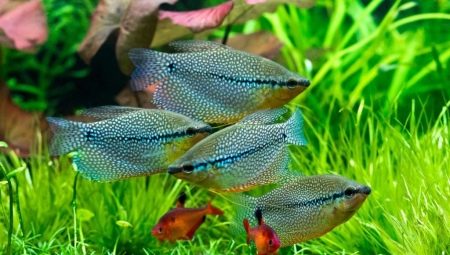Gurami is one of the most popular varieties of fish for home breeding. Breeders are attracted by both unusual coloring, beautiful movements of the fish, and its calm, “royal” character. In order for the little pet to please the owner of the aquarium for a long time, it is worthwhile to find out with whom this species coexists well and which neighbors it will not tolerate.
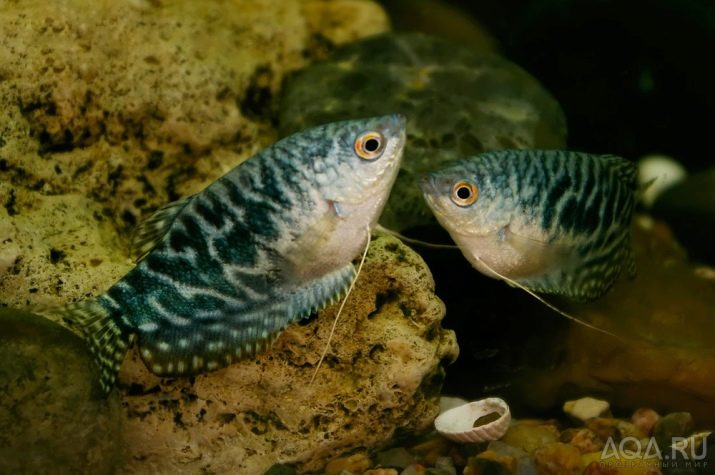
Character Features
Marble gourami is a very bright aquarium fish. Has many fans among fans of home aquariums. It mesmerizes with its slow, measured, majestic movements, has a beautiful marble color, which seems to glow from the inside, and the long whiskers of the ventral fins quietly feel surrounding objects and look like legs.
Gourami is pretty unpretentious to water quality. For a comfortable stay in the aquarium she does not need a constant flow of oxygen, prefers to slowly dwell in the lower layers.
Marble gourami is the result of a long selection of scientists and is not found in natural open waters. The marble color of the fish is a blurry dark spots resembling a patterned pattern on the stone of the same name. Very young individuals do not have a clear and bright color; in older fish at the stage of puberty, this color appears, becomes more catchy during the breeding season.
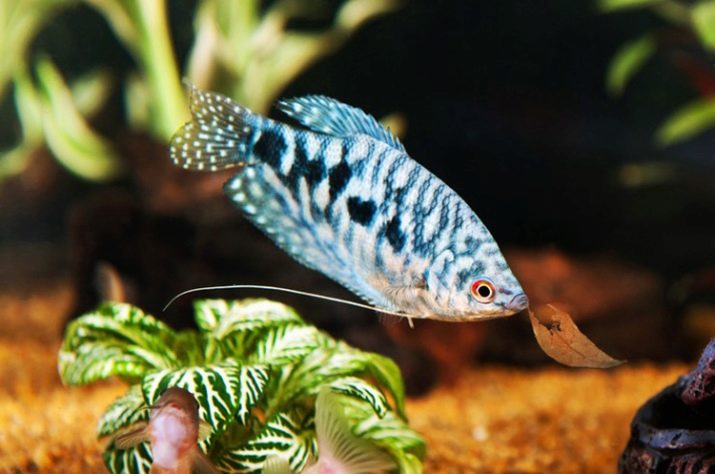
These "royal" persons will not intentionally drive and disturb other fish, destroy their fry. They prefer to eat various small feeds in frozen or dry form, as well as live food (bloodworms, tubule), fresh semolina prepared in a special way, canned green peas. In case of starvation and lack of basic nutrition, gourami can feed on various parasites that fall into the water along with food, snails.
Marble gourami has a peculiar character. In appearance, the fish is calm and peaceful, but there are times when it can be aggressive towards other inhabitants of the aquarium. In addition, by virtue of its natural nature, this beauty may not exist peacefully with all fish of other species. Very often attacks of aggression occur in male gourami during the spawning period, when it becomes necessary to protect their female and nest with laid eggs. Spawning is the most important process in the life of fish; during this period, any individual is subject to stress and fears for the safety of its offspring.
Females prefer to hide in shelters, males are unpredictable and unbalanced.
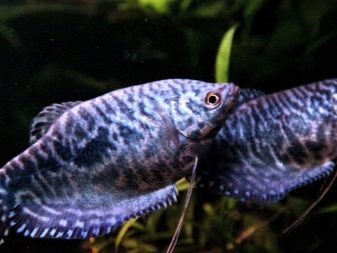

Compatibility Factors
The aggressiveness of the marble gourami is due to its natural incivility with other underwater representatives. But this problem can be solved by hooking fish to them that will not irritate and interfere with comfortable life. It is necessary to find the best content option. To this end, you can resettle everyone in a more spacious aquarium, put in it more underwater plants, other decorative objects resembling the bottom of a reservoir. In this case, each inhabitant will feel protected and will be able to find shelter for himself.
For the prevention of aggressive behavior and fights between fish is best put aggressors and brawlers in a separate aquarium for a while. If the size of the tank allows the fish to move comfortably along it, then it will be good to plant representatives of more peace-loving species of fish, who will not pay attention to badass and come into conflict with it, to inanimate individuals. Thus, aggressive behavior among brawlers will be smoothed out.
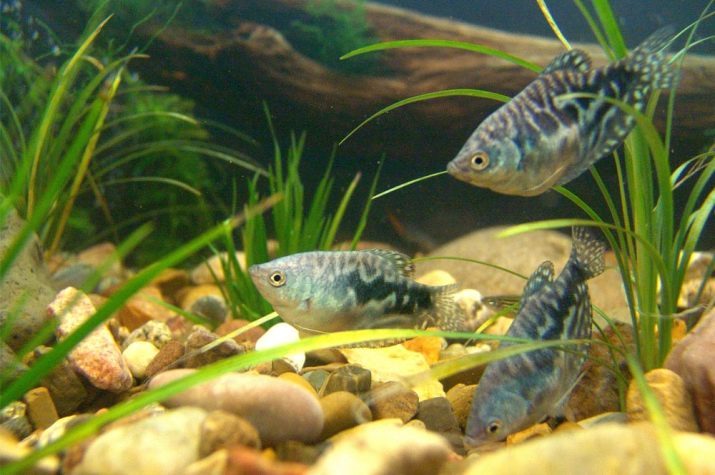
Marble gourami is a rather large fish, grows up to 10–11 cm in length, therefore, it is necessary to choose a company based on the size of the fish, color, nature, sex, and content.
The best neighbors for marble gourams are considered scalars, ancistruses, apistograms, neons, minors, corridors. These types of fish have good compatibility with each other, are quite calm, have a balanced character and rarely exhibit aggressive behavior towards others.
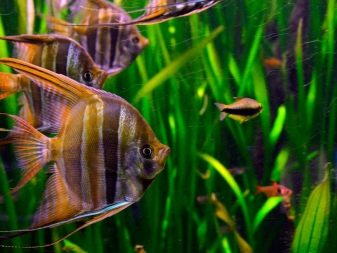
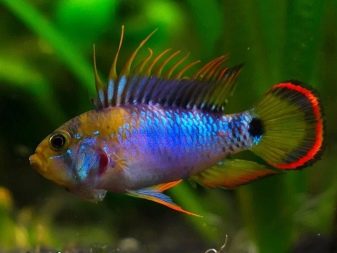
What species do you get along with?
Fishes of the same size can exist peacefully with marble gouras, since larger individuals suppress it, and smaller ones can be an object of aggressive behavior. In the aquarium you can keep several gourami, then skirmishes between males will be minimized.
Each gourami should have a couple, then the fish live in families and rarely conflict. Good compatibility can be ensured by neons, iris, bots, catfish, corridors, zebrafish, minors, swordsmen, angelfish, barbs, koi carp, lapiuses, catfish plecostomuses. These fish have calm disposition, balanced character, not weak-minded towards neighbors, prefer a quiet measured way of life.
Angelfish, Macropods, Laliuses and thorns also may well live together with gurus.
Marble gourami loves to hide in various shelters, loves when there are a lot of algae and plants in the aquarium.
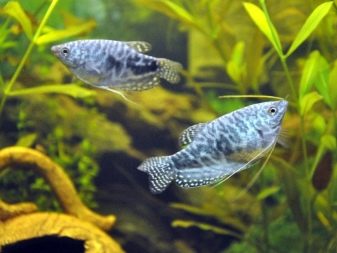
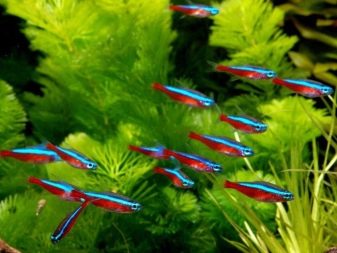
In one artificially created pond, if it is quite spacious, it is possible to contain several species of fish that are compatible with each other and differ in the same content parameters. When settling other varieties for gourams, you need to think about how and where they will spawn and arrange nests for posterity. For this it is necessary to create suitable conditions.
Average compatibility among gourami with discus, eel. Under appropriate containment conditions, these species may well coexist.
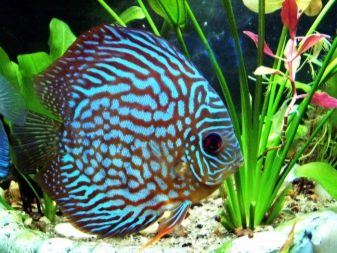
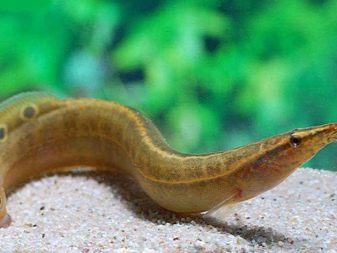
With whom is cohabitation not very desirable?
The main causes of conflicts and skirmishes between fish are:
- catchy appearance, lush long fins and tail, which can not ignore other species of fish that live nearby;
- each fish vitally needs a personal space for a full-fledged existence - if some fish prefer to live in the lower layers of the aquarium, and others in the upper layers, then conflicts between them are completely excluded;
- not enough spacious aquarium, lack of places for shelter and privacy, a small amount of algae;
- superiority in the size of some fish over others, which allows them to rub and drive smaller individuals.
Keeping gourams and goldfish together is undesirable, since both of these species have a spectacular color, long fins, which means that they can become the object of envy of each other. Goldfish, unlike gourami, are very voracious, quickly and deftly grab food, leaving no other.
It is not recommended to add more nimble, active and playful fish to the gourami, because the gourami is very calm and greatness! Excessive fuss will annoy her.
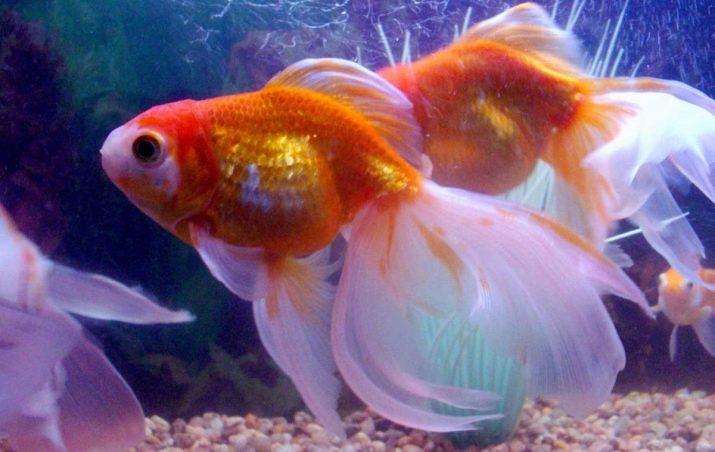
With whom is collaborative content contraindicated?
Experienced aquarists do not recommend keeping together small harmless fish and large predators. Active, fast fish can damage the long whiskers of the gourami and interfere with their fuss. Undesirable neighbors include cichlids, cockerels, parrot fish, astronotus. To confrontation and sad consequences can lead neighborhood with guppies and shrimp, because some can be eaten by others.
The parrot fish in relations with gouras, by virtue of its firm and stubborn nature, always dominates.
You can not be laced with a pair of lonesome macropods gourami - This is the largest aggressor of all species of fish. He will certainly attack and rip fins, mustaches, chase fry, destroy caviar with gourami.
More aggressive, larger, faster, playful fish are not suitable for living together with gouras.
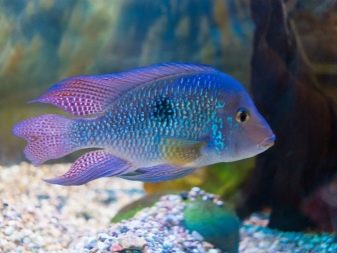

Beginner aquarist before settling the aquarium it is better to consult with experienced specialists, study the fish compatibility table and only then select the species for cohabitation.

For more information about marble gourami, see the next video.
